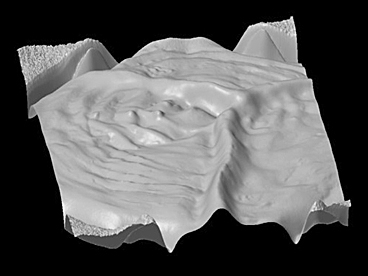Researchers at MIT have developed a new technology that may make it easier for doctors to detect polyps during a colonoscopy procedure. In addition to the traditional two-dimensional images, photometric stereo endoscopy captures topographical 3D images of a colon’s surface.

MIT researchers have developed a new type of endoscopy that can produce three-dimensional images of the surface of the colon.
From Mashable: Photometric stereo endoscopy uses multiple light sources and special software to help construct 3D maps of the colon’s surface.
The news was published as a paper in the Journal of Biomedical Optics. The paper suggests that the new technique highlights flatter lesions that a traditional endoscopy can miss. The paper was authored by Vicente Parot, Daryl Lim, Germán González, Giovanni Traverso, Norman S. Nishioka, Benjamin J. Vakoc, and Nicholas J. Durr.
Next steps? From the MIT News Release: The researchers plan to test the technology in human patients in clinical trials at MGH and the Hospital Clinico San Carlos in Madrid. They are also working on additional computer algorithms that could help to automate the process of identifying polyps and lesions from the topographical information generated by the new system.
Mashable provides a great summary in layman’s terms as well as a comprehensive video report.
